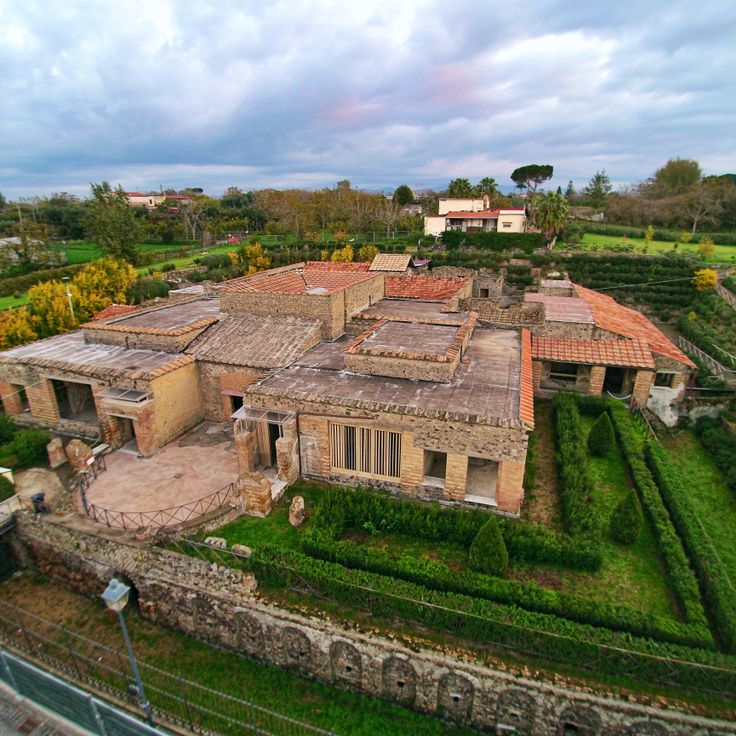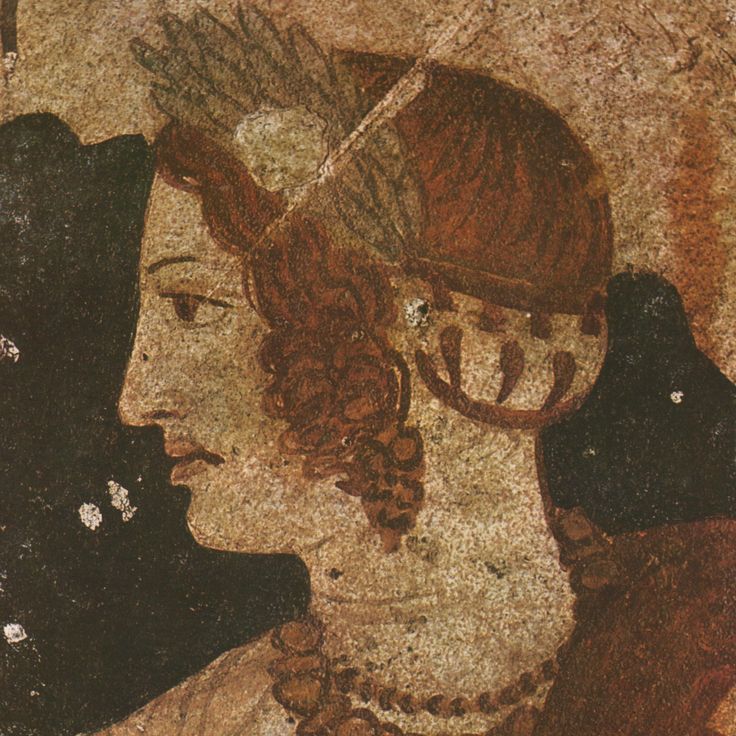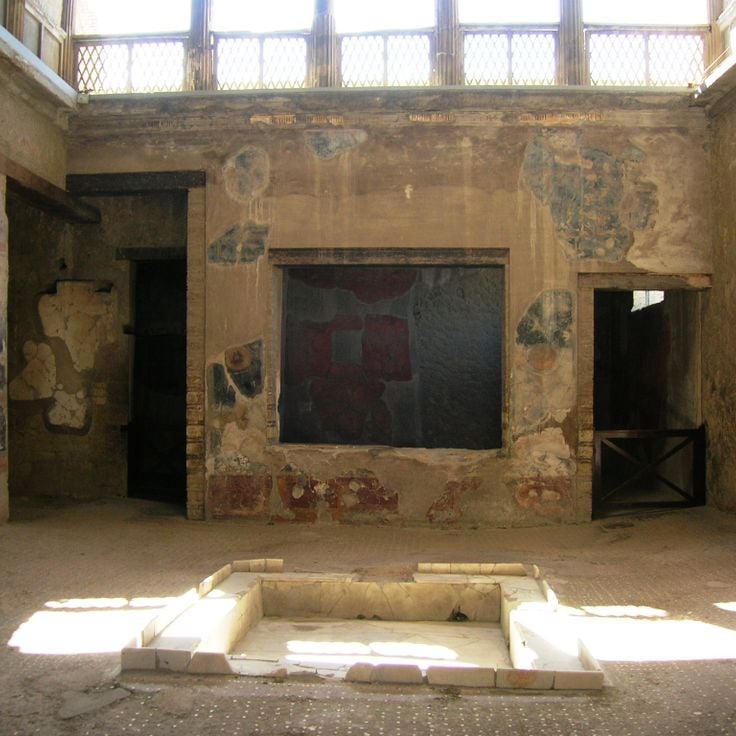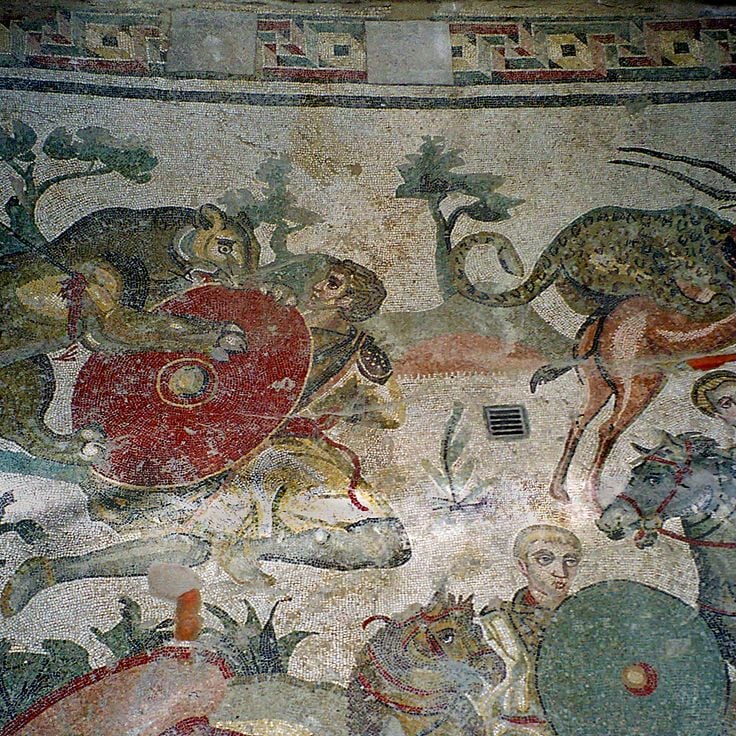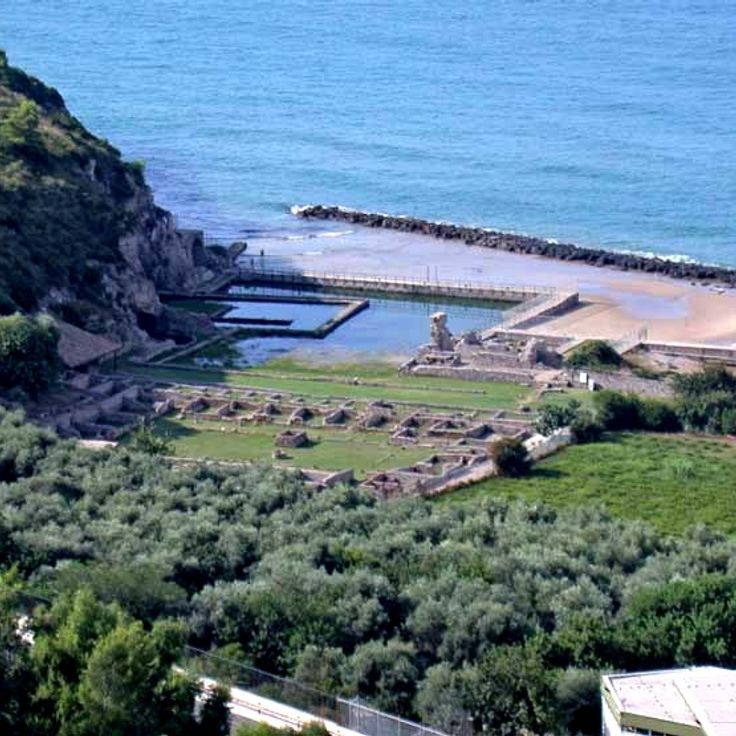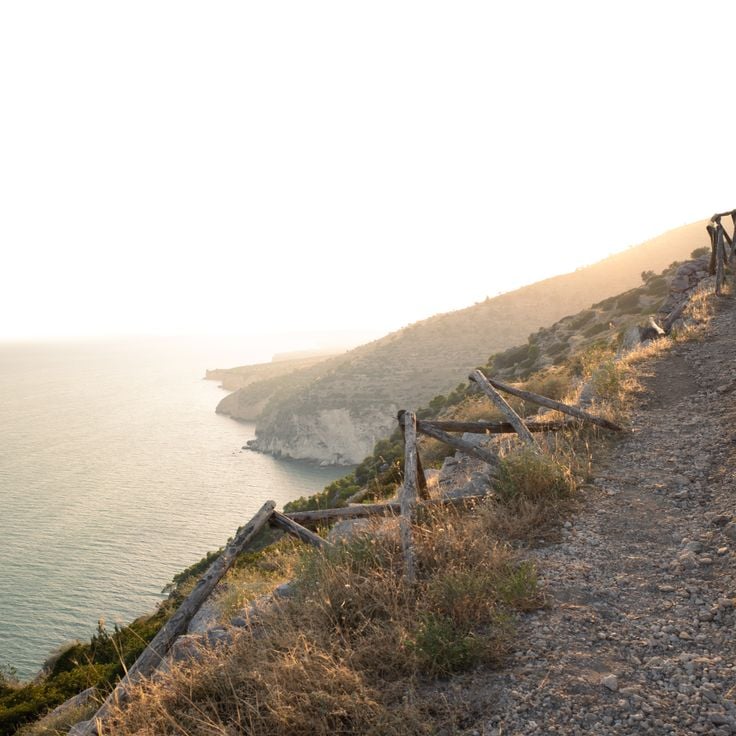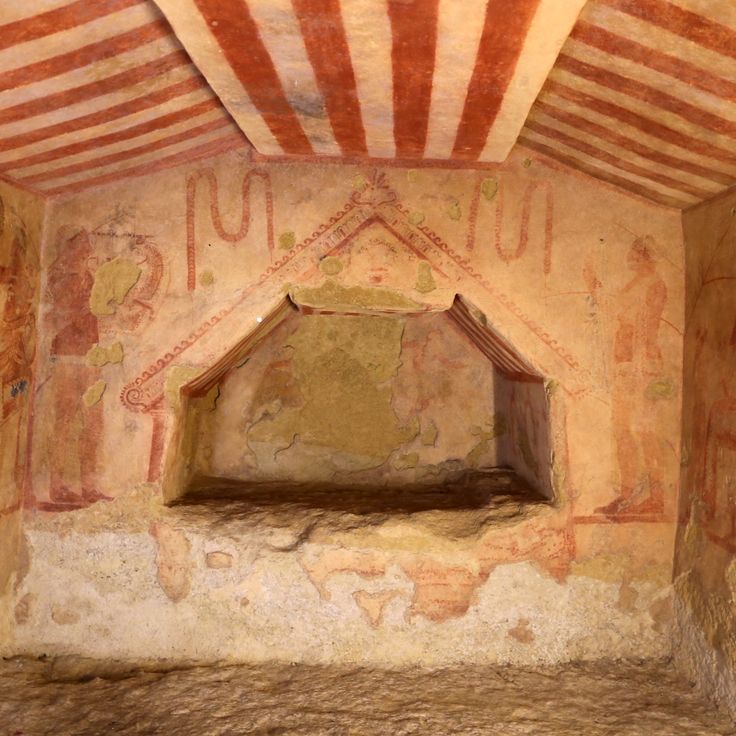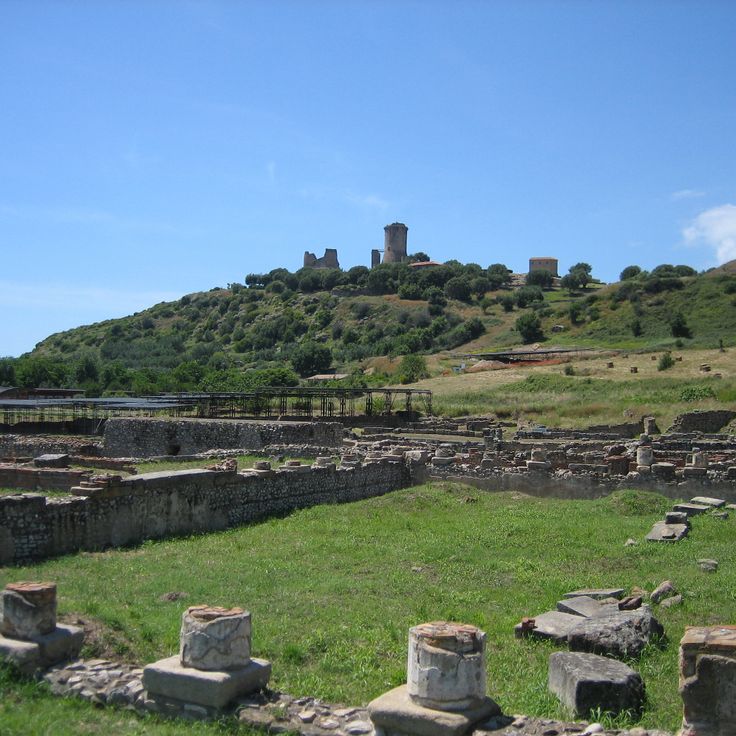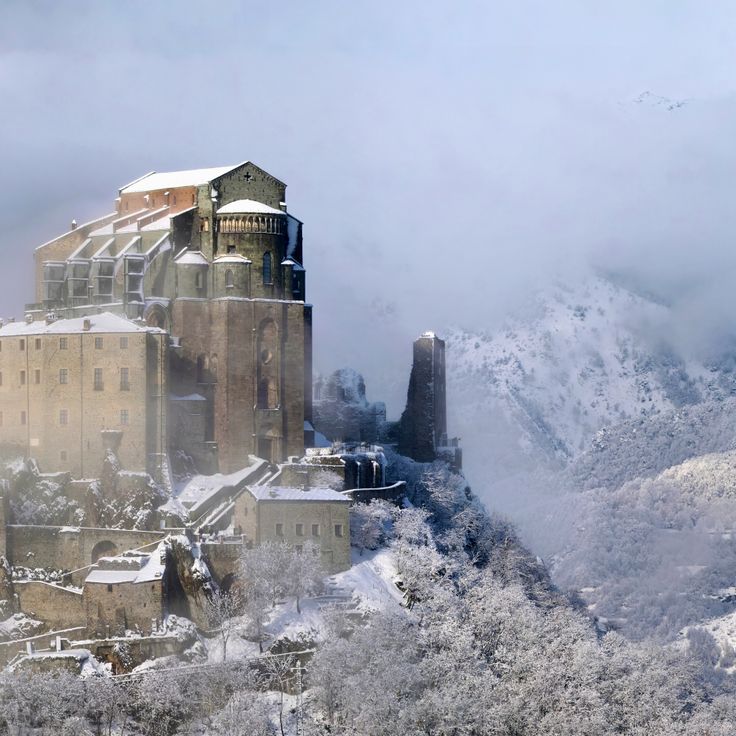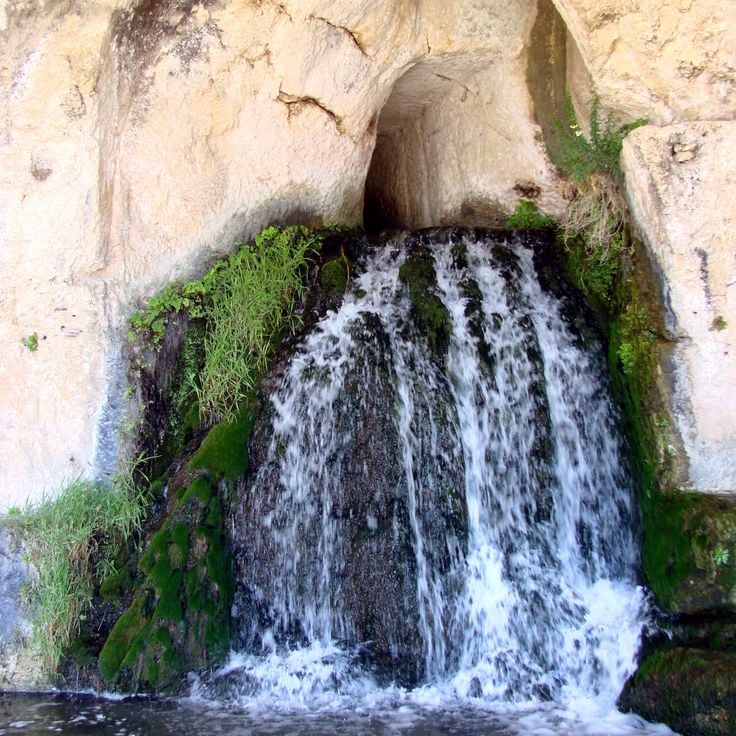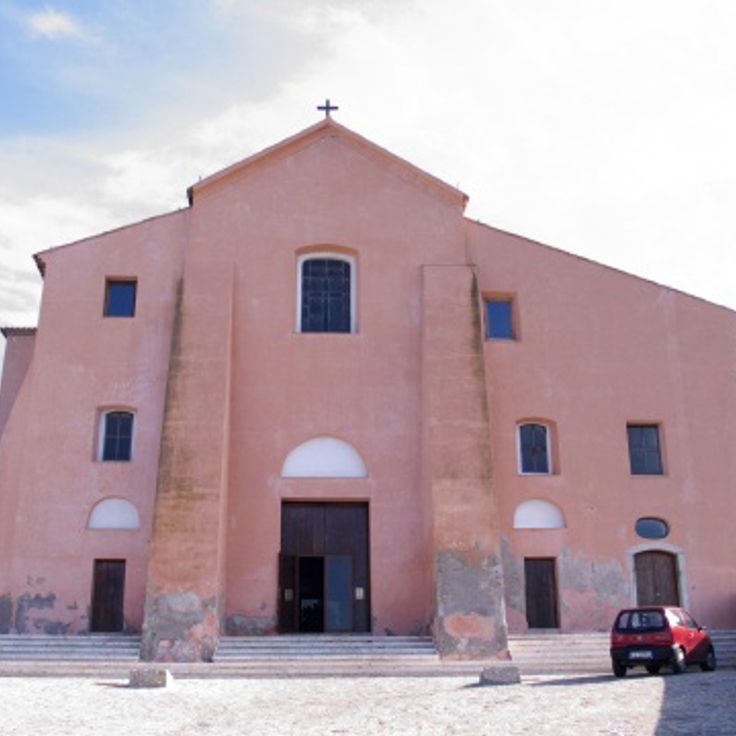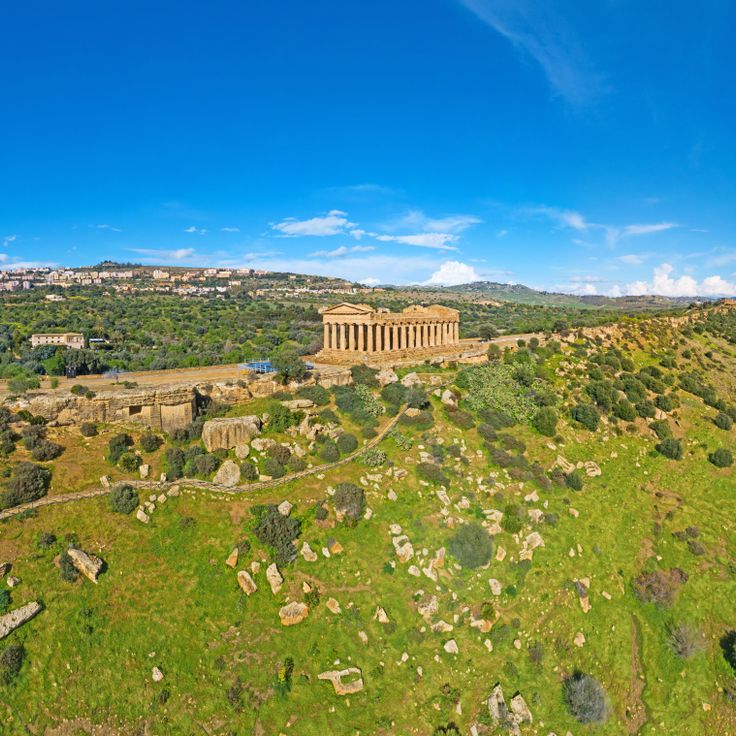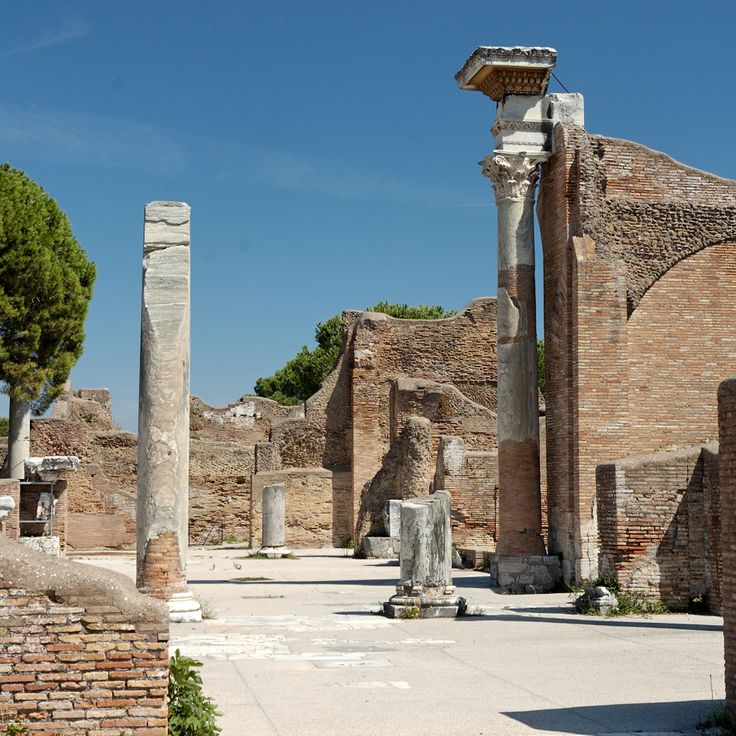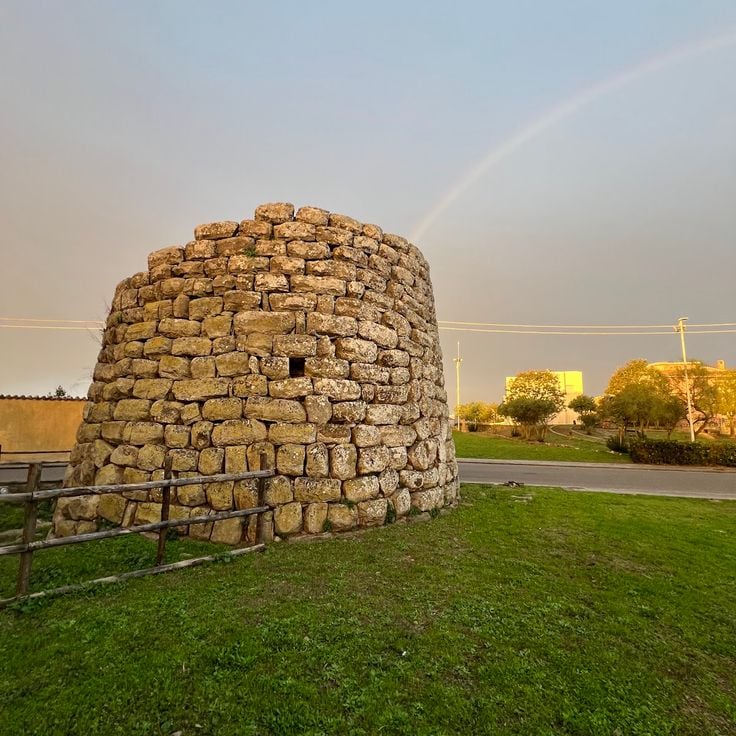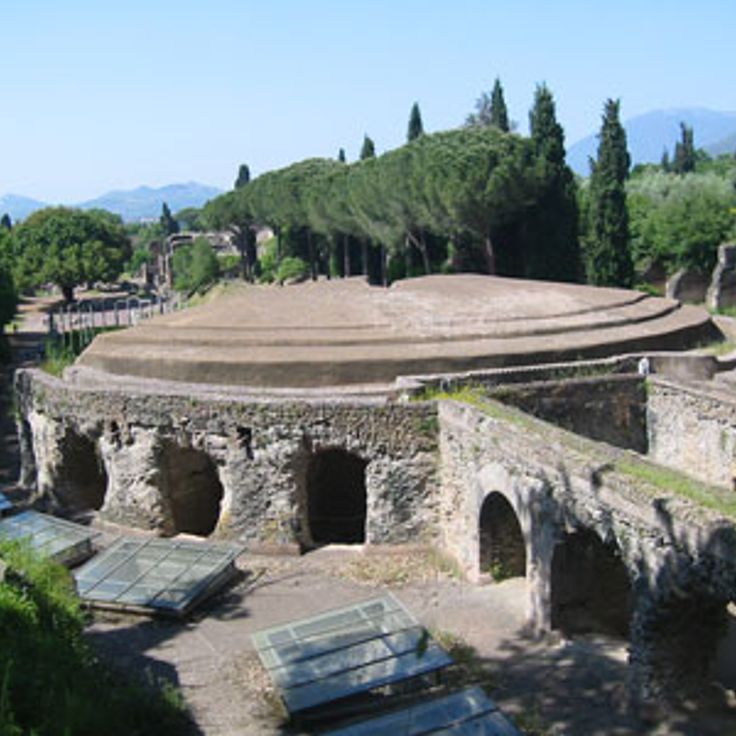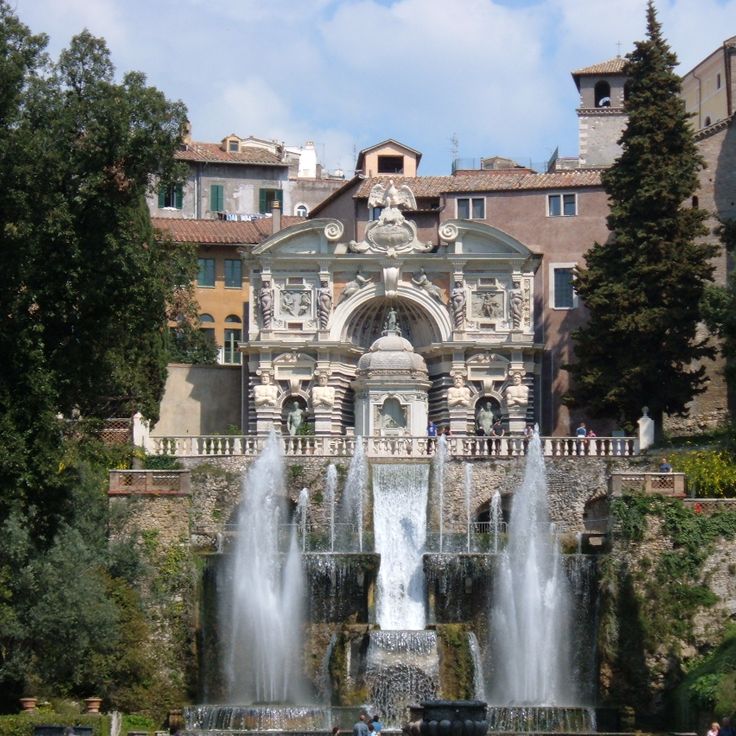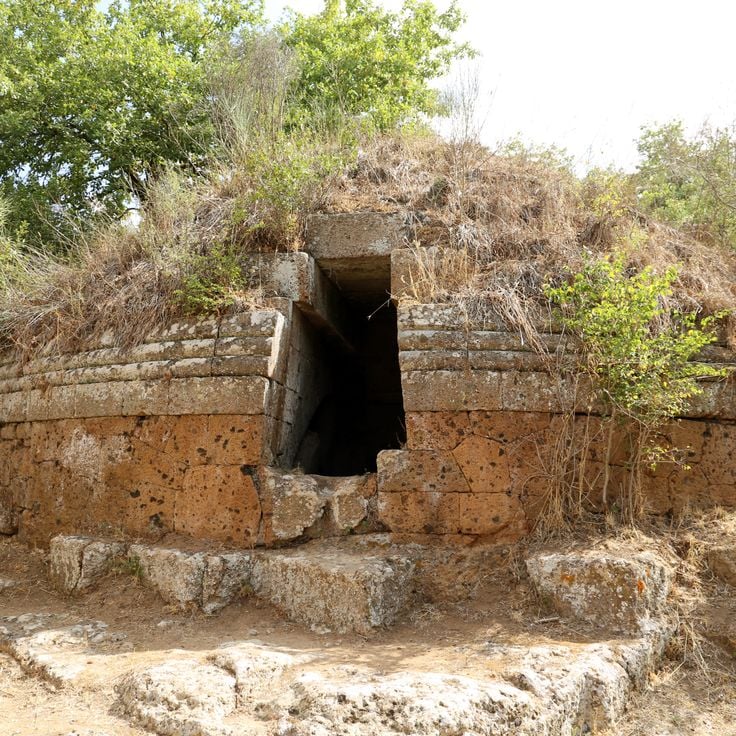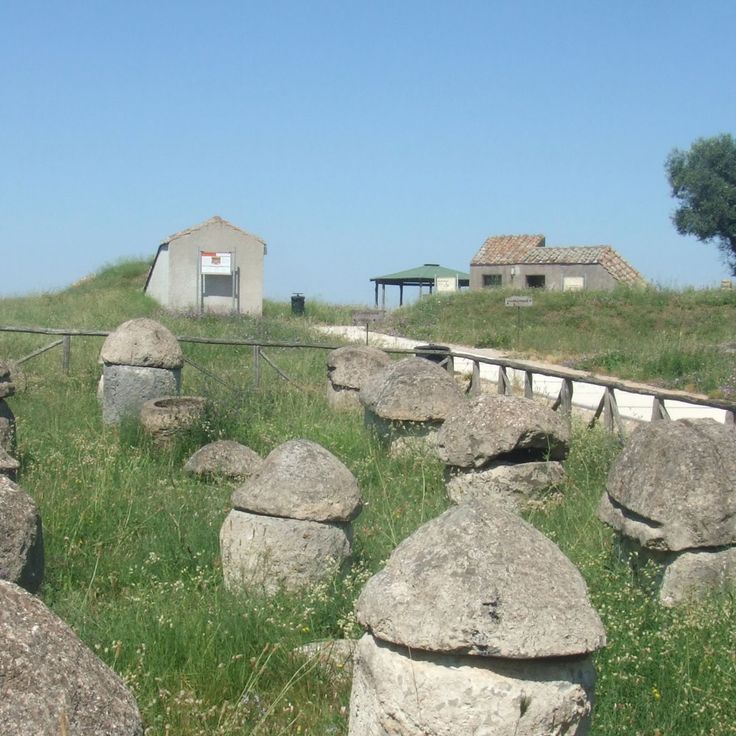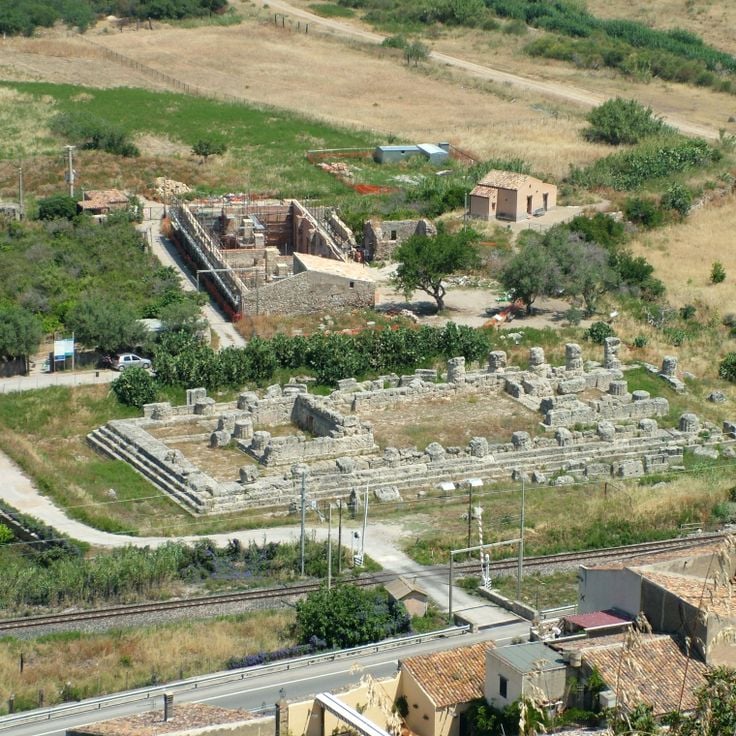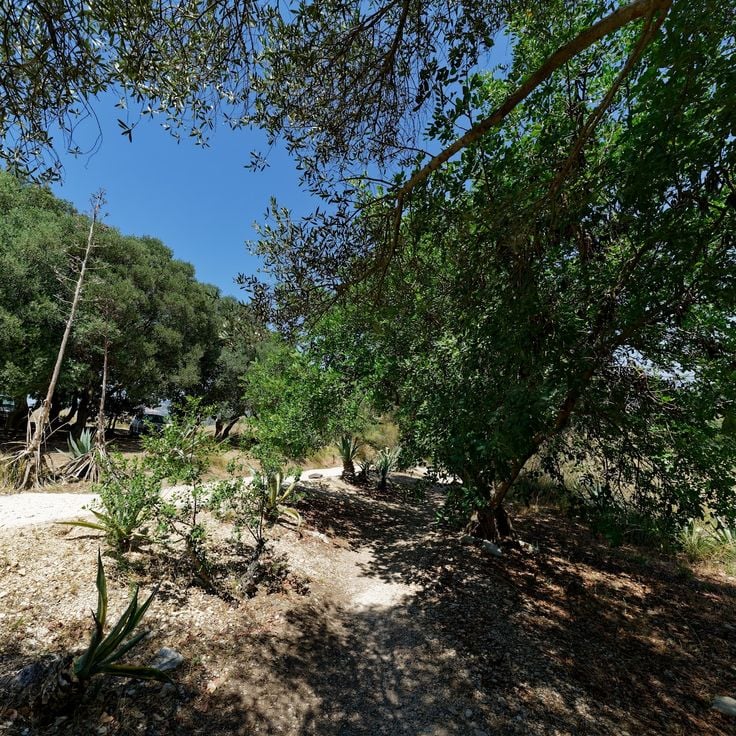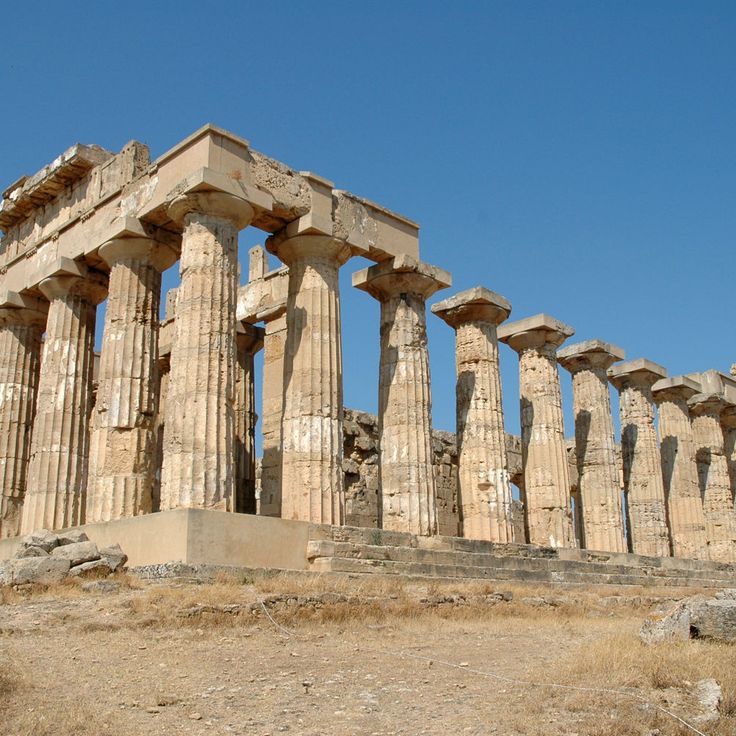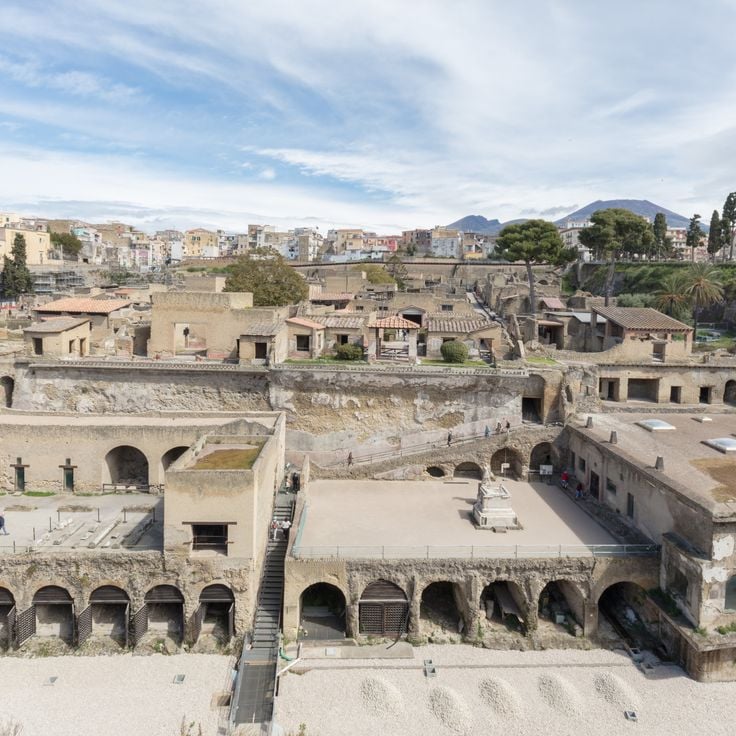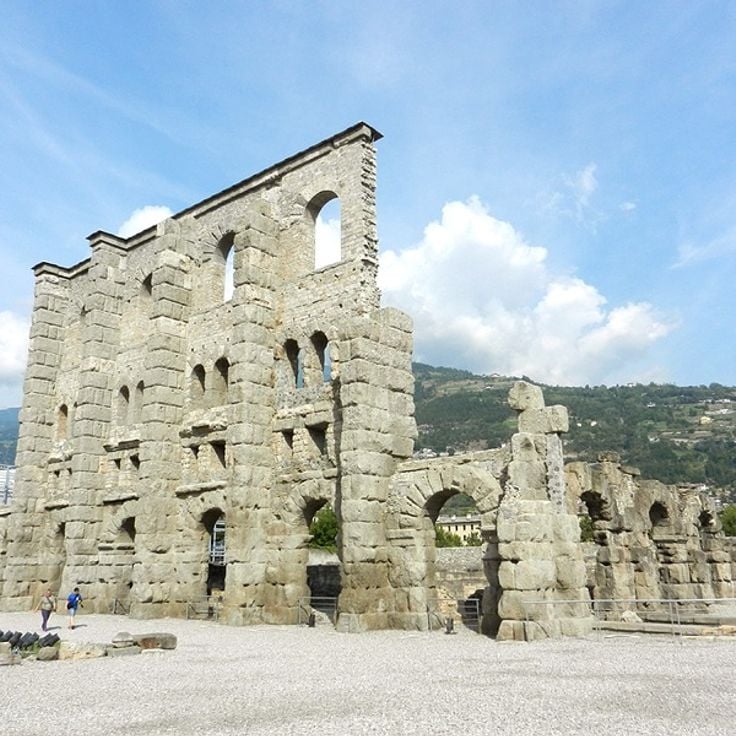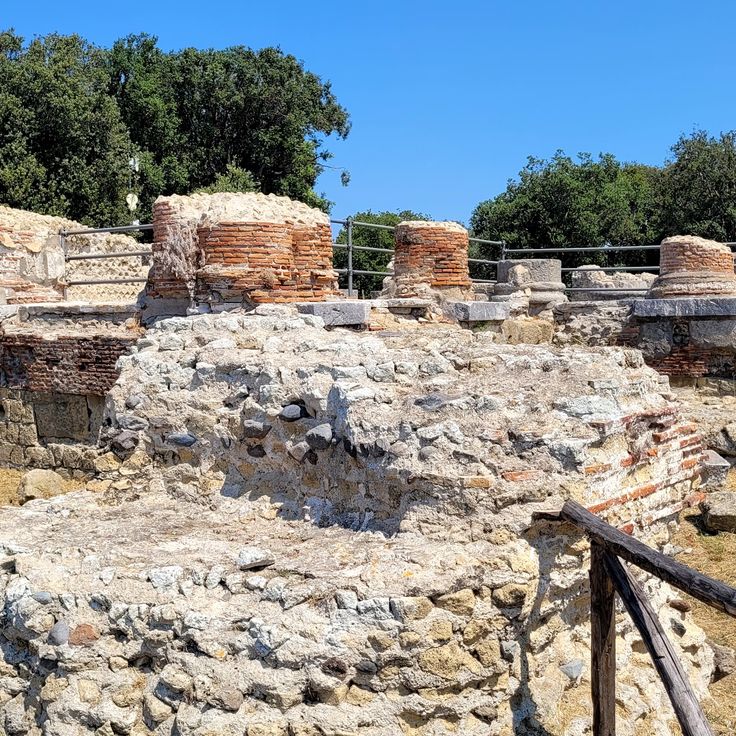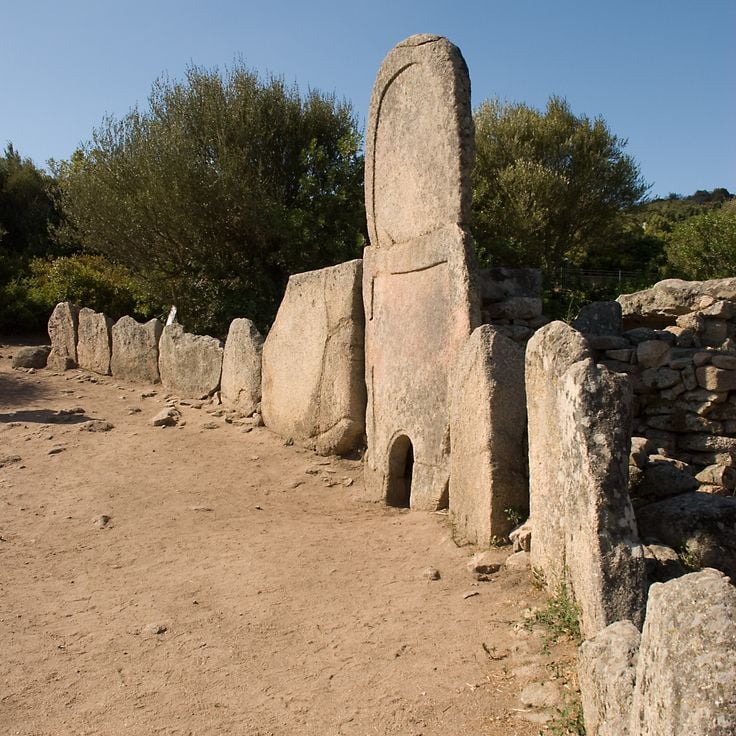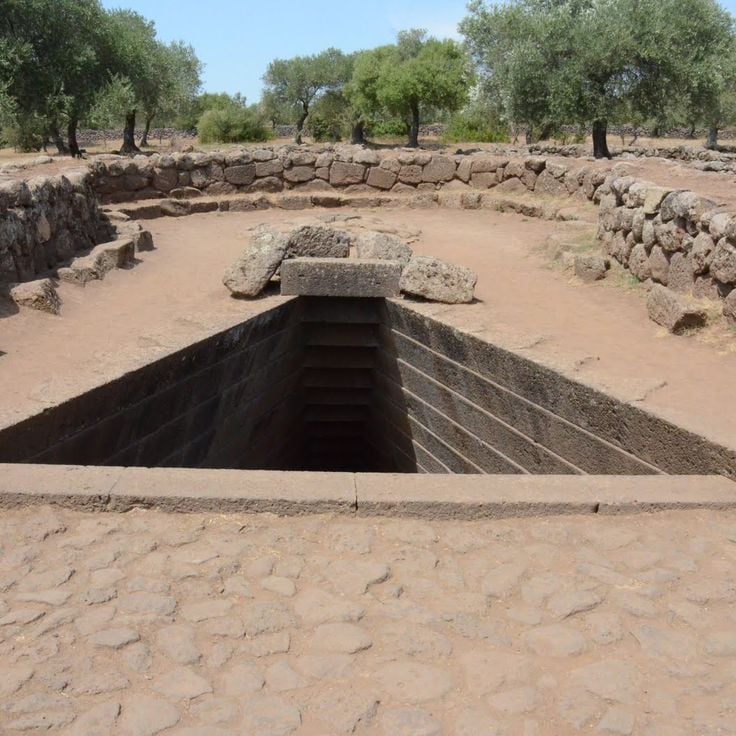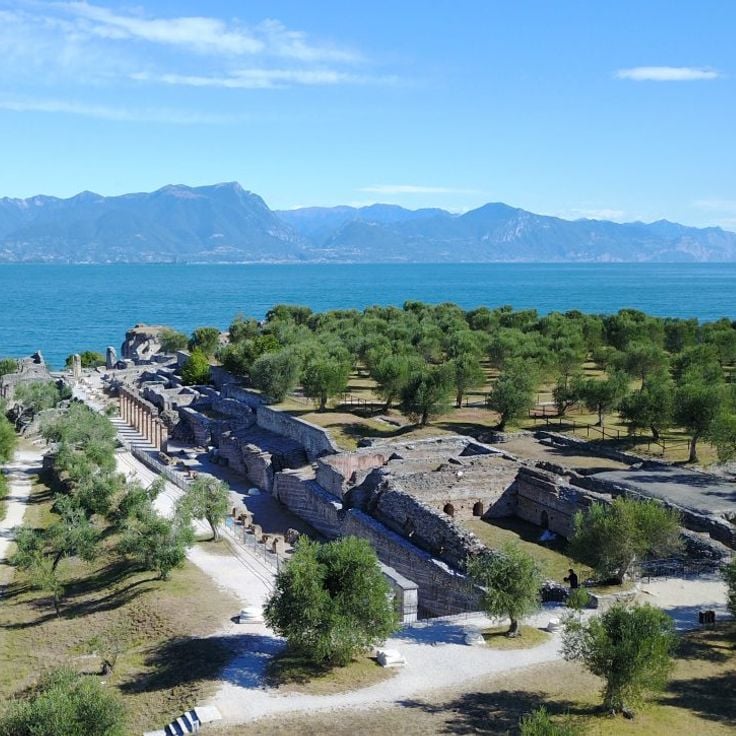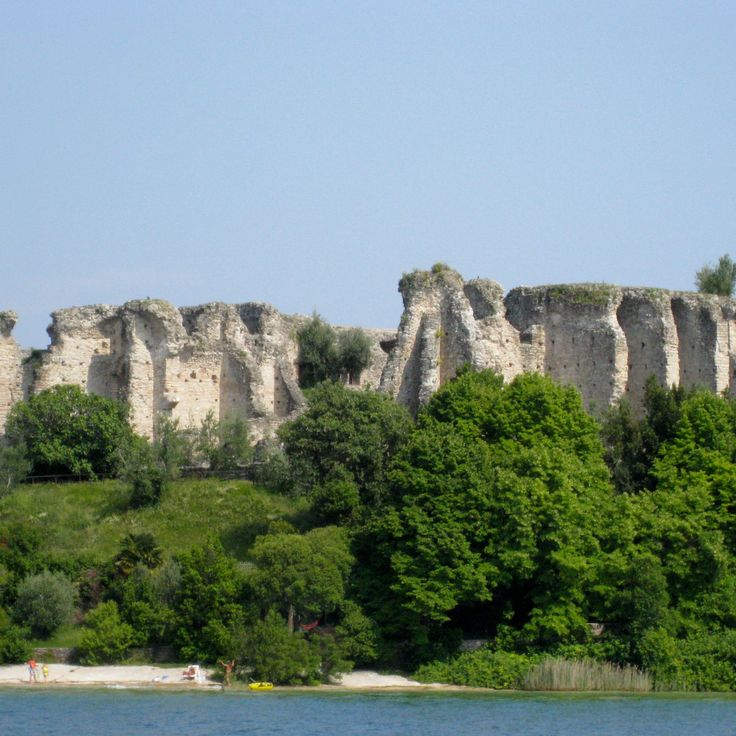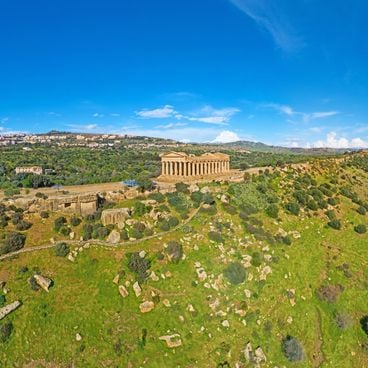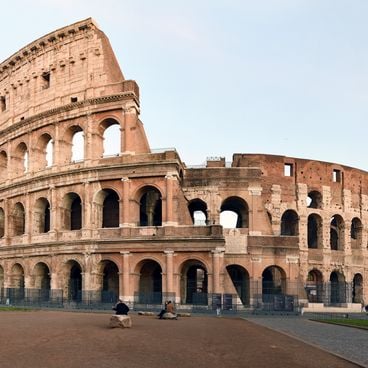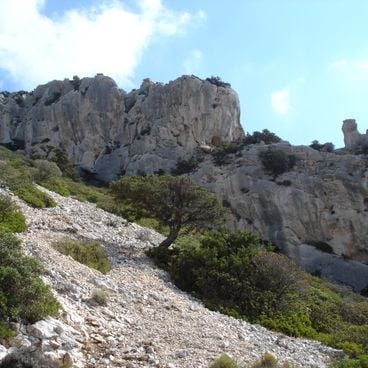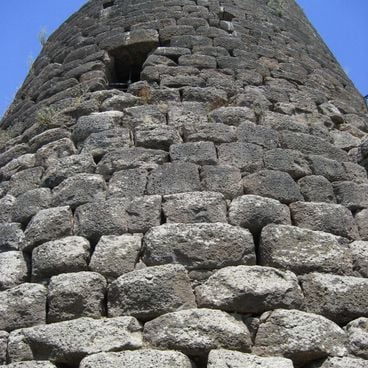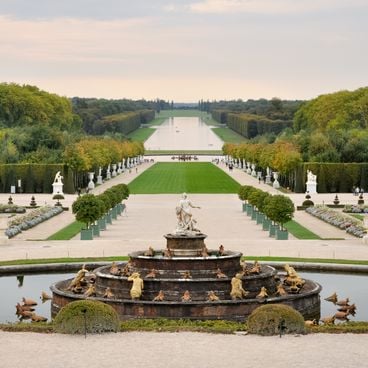Italy holds archaeological sites spanning several millennia, offering insights into Etruscan, Greek and Roman civilizations. These locations include necropolises with thousands of tombs, well-preserved Roman villas and ancient settlements along the Mediterranean coast. Many of these sites lie beyond the more familiar destinations and document different aspects of Italian history. The Necropolis of Pantalica near Sortino contains approximately 5,000 rock-cut tombs from the Sicilian Bronze Age, while the Villa of the Mysteries in Pompeii is known for its wall paintings from the first century BCE. Villa del Casale near Piazza Armerina displays Roman floor mosaics covering more than 37,500 square feet (3,500 square meters). Etruscan burial sites like the Tomb of the Orcus in Tarquinia preserve frescoes from the fourth century BCE. The Archaeological Park of Elea-Velia near Ascea includes remains of a Greek colony founded in the sixth century BCE.
This necropolis extends five miles (8 km) along limestone cliffs and forms one of the largest archaeological sites in Italy with roughly 5000 rock-cut tombs. The burial chambers were created between 1250 and 650 BCE and document the burial practices of several cultures across six centuries.
This Roman villa from the 2nd century BCE stands in Pompeii as one of Italy's significant archaeological sites. The structure contains 70 rooms, with walls decorated in red frescoes depicting ritual scenes. The paintings provide insight into religious practices of the Roman period and establish this villa as an important example of ancient culture in the Campania region.
This Etruscan burial chamber in Tarquinia dates to the 4th century BCE and features well preserved wall paintings. The frescoes depict mythological figures from the underworld along with banquet scenes that document the life and afterlife beliefs of the Etruscan elite. This underground structure ranks among the most important examples of Etruscan tomb art in the Tarquinia necropolis and represents a key site in understanding pre-Roman Italian civilization.
This two-story townhouse from the 2nd century BCE ranks among the most significant dwellings of pre-Roman construction in Herculaneum. The Samnite House preserves a columned courtyard, wall paintings and mosaic floors from the Samnite period, before the city fell under Roman control. The architectural details document the lifestyle of wealthy families in the Campania region during the Hellenistic era. As part of this collection of archaeological sites in Italy, the building illustrates the cultural development between Etruscan tradition and Roman influence.
This fourth-century mausoleum consists of a circular two-story structure with red brick walls and vaults from the Constantinian period. The tomb stands as one of Rome's early Christian monuments and demonstrates the architectural developments of the era. Built as the burial site for Helena, mother of Emperor Constantine, the Mausoleum of Helena reflects the transition from Roman to early Christian funerary traditions.
This Roman palace complex from the fourth century covers an extensive area and preserves approximately 38,000 square feet (3,500 square meters) of floor mosaics depicting hunting scenes, mythological figures and daily life. The Villa del Casale ranks among the most important archaeological sites in Italy and documents the artistic mastery of Roman craftsmen in late antiquity. The mosaics extend through numerous rooms and corridors of the complex and show scenes from the lives of the Roman upper class along with representations from Greek and Roman mythology. Archaeologists date the construction of this villa to the early fourth century AD.
This Roman villa belonged to Emperor Tiberius and sits on the Tyrrhenian coast between Rome and Naples. The first-century complex includes a natural sea cave that served as a dining hall and was decorated with marble statues depicting scenes from Homer's Odyssey, now displayed in the adjacent museum. The excavations at this archaeological site add to Italy's collection of Roman coastal residences and offer insight into the private retreats of emperors.
This necropolis on a hill above the sea contains approximately 500 rock-cut tombs dating from the 6th to 4th century BC. Monte Saraceno represents a Daunian settlement with extensive burial grounds that provide insight into pre-Roman cultures of Apulia and expand understanding of Italy's archaeological sites across multiple historical periods.
This fourth-century BCE burial chamber contains wall paintings and artifacts from the Samnite culture. The Tomb of Pulcella represents a significant period of Italian prehistory within this collection of archaeological sites that documents various epochs from the Etruscans to Roman villas. The findings inside offer insights into the burial practices and daily life of the Samnites, an Italic people who inhabited large parts of southern Italy before Roman conquest of the region.
This archaeological park preserves the remains of the Greek settlement of Elea-Velia, founded in the 6th century BCE. Visitors find temples, thermal baths and an acropolis positioned on a hill, illustrating the organization of this ancient city. The park stands among numerous archaeological sites across Italy that document different periods of history and offer insights into Greek settlement patterns along the coast.
The Sacra di San Michele stands at 3,150 feet (962 meters) in the Piedmont Alps and ranks among the important medieval monastic complexes of northern Italy. This 10th-century abbey combines Romanesque and Gothic architectural elements developed across several construction phases. The monastery served for centuries as a major pilgrimage site on the Via Francigena between Rome and Mont-Saint-Michel in France. The complex demonstrates the architectural evolution of religious buildings from the early Middle Ages through the late Gothic period and documents the historical role of Benedictine monks in this Alpine region.
This natural cave along the Ciane River served as an ancient sanctuary dedicated to water nymphs and features carved niches and water elements cut into the rock. The Grotta del Ninfeo belongs to Italy's archaeological sites that document various periods of history, from Etruscan tombs and Roman villas to ancient cult sites like this one.
This archaeological site preserves three Doric temples from the sixth and fifth centuries BCE, among the best-preserved Greek structures in Italy. Capaccio Paestum documents the history of a Greek colony that later came under Roman control. The adjacent museum displays tomb paintings, including the Diver fresco from the fifth century BCE. The site includes a Roman forum, an amphitheater and residential quarters. These ruins provide insights into Greek architecture and urban development across several centuries along the Campanian coast.
This site documents Greek architecture from the 5th century BCE with temples dedicated to Hera, Concordia and Zeus, contributing to Italy's record of ancient Mediterranean settlements. The grounds extend across a ridge above Agrigento and include foundations, columns and reconstructed sections of Doric buildings. The Temple of Concordia ranks among the best preserved Greek temples and displays the original peristasis with 34 columns. Remains of an unfinished temple to Olympian Zeus contain recumbent telamones, colossal male figures that once served as supporting elements. Burial sites and an archaeological museum on the grounds preserve artifacts from the Greek and Roman periods.
This archaeological site lies near the mouth of the Tiber River, roughly 19 miles (30 kilometers) southwest of Rome. Ostia documents over a thousand years of Roman urban history and preserves remains of apartment blocks, public baths, theaters and commercial structures. The excavations illustrate daily life in a major port city of ancient Rome and provide insights into trade routes and urban development from the fourth century BCE to the fifth century CE.
This Bronze Age stone complex in Sardinia dates from the second millennium BCE and demonstrates the building methods of the Nuragic civilization. Su Nuraxi consists of a central tower surrounded by several smaller towers and a fortification wall, along with remains of a surrounding village. The site remained in use into the Roman period and documents the development of settlement patterns on the island across more than a millennium.
This extensive imperial residence in Tivoli was built between 118 and 138 CE for Emperor Hadrian and covers approximately 740 acres (300 hectares). The villa includes theaters, baths, libraries, residential quarters and garden complexes that document Roman engineering and the architectural influences from provinces Hadrian visited. Preserved structures such as the Canopus pool, the Teatro Marittimo and the palace quarters demonstrate the scope of Roman imperial architecture in the second century.
This 16th-century villa in Tivoli is known for its terraced gardens and more than 500 fountains. The property was built for Cardinal Ippolito II d'Este and demonstrates Renaissance hydraulic engineering along with fresco programs in the interior spaces. The garden extends across multiple levels with water features fed by an artificial canal system.
This Etruscan necropolis lies in Cerveteri and occupies approximately 990 acres (400 hectares) with several thousand burial mounds extending along streets resembling ancient city plans. Banditaccia documents Etruscan burial practices from the 9th to 1st century BCE through tumuli and chamber tombs carved into tufa rock. The site displays architectural elements including carved columns and stone beds within tomb chambers that mirror the residences of the living. Visitors can explore hundreds of restored tombs, including the Tomb of the Reliefs with stucco decorations of household items. This necropolis ranks among Italy's significant Etruscan sites, providing insights into a civilization that preceded Rome.
This necropolis in Tarquinia contains approximately 6,000 Etruscan burial sites dating from the ninth to the first century BCE, with about 200 tombs featuring frescoes that depict scenes of daily life, religious rituals and mythological representations, offering insights into Etruscan civilization and funerary practices comparable to those found at the nearby Necropolis of Banditaccia.
This archaeological museum in Savelletri focuses on finds from the nearby Messapian city of Egnatia, founded in the sixth century BCE and prosperous under Roman rule. The collection documents through pottery, funerary goods and architectural elements the development of an ancient settlement on the Adriatic coast. The museum complements Italy's network of archaeological sites that document different periods of history and offer insights into Mediterranean civilizations. The displayed objects come from systematic excavations in the adjacent archaeological park and show craft and commercial connections across the Adriatic.
This archaeological site along the northern coast of Sicily documents the remains of a Greek colony founded in the seventh century BCE. Himera includes temple ruins, residential quarters and fortifications from various periods, contributing to an understanding of Greek settlement in Italy.
This archaeological park covers a site with a Doric temple from the late fifth century BCE and a theater from the Hellenistic period. The complex documents the history of ancient Segesta, one of the principal Elymian settlements in Sicily. The theater accommodates roughly four thousand spectators and sits on a hillside overlooking the surrounding landscape. The temple stands unfinished with thirty-six columns made from local limestone. The site displays remains from different building periods spanning the sixth century BCE through the Roman era.
This archaeological site in western Sicily contains remains of a Greek colony founded in the seventh century BCE. Selinunte stands among the significant examples of Hellenistic urban planning in Italy, documenting different phases of Greek settlement in the Mediterranean through its Doric temple ruins, fortifications and necropolises. The complex spreads across several hills and offers insights into the urban organization and religious architecture of ancient Greeks in Sicily.
This ancient Roman city was buried by the eruption of Mount Vesuvius in 79 CE and sits along the Bay of Naples. Herculaneum offers detailed insights into first-century urban architecture, including multistory buildings, wooden elements and mosaic decorations preserved by volcanic material. The excavated site includes public baths, a theater and residential structures with intact frescoes and furniture.
This Roman forum in Brescia ranks among Italy's significant archaeological complexes and documents the city's development during the Imperial period. The site includes a Capitoline sanctuary from the first century, a theater and several porticoes, offering insights into Roman urban planning in northern Italy.
This theater in Aosta was constructed in the first century CE under Emperor Augustus and held approximately 3,500 spectators. The preserved stage facade extends over 72 feet (22 meters) and demonstrates the architectural construction of Roman theatrical buildings in the Alps. The site documents the spread of Roman culture across the northern provinces of the empire.
This archaeological site in Pozzuoli documents the Greek colony of Cumae, founded in the eighth century BCE. Parco archeologico di Cuma includes the Antro della Sibilla, a trapezoidal tunnel from the sixth or fifth century BCE, along with temples on the acropolis and remains of Roman structures. The site sits near the Gulf of Naples and shows different building phases spanning more than a thousand years.
This Bronze Age passage grave in Arzachena documents the Nuragic culture of Sardinia through the characteristic structure of a Giants' grave monument: a central corridor and semicircular exedra. The site complements the archaeological locations across Italy that provide insights into different Mediterranean cultures from the Bronze Age through the Roman period, showing Sardinian burial traditions from approximately 1800 to 1600 BCE.
This archaeological site in Paulilatino contains a nuragic complex from the late Bronze Age with a temple structure, a ceremonial well and remains of circular buildings. The sacred well of Santa Cristina displays advanced construction techniques of the nuragic culture through its precise stone architecture. The site documents religious practices and social organization of this Sardinian civilization between the 11th and 8th centuries BCE.
This Roman theatre in Verona dates to the first century BCE and occupies the northern slope of San Pietro hill above the Adige River. The structure uses the natural hillside for its tiered seating, which originally accommodated approximately 3,000 spectators. Roman terrace remains stand above the theatre complex. The site represents one of the surviving Roman constructions in northern Italy and documents Verona's development as a Roman municipium.
This Roman villa on a peninsula on Lake Garda is among the largest villa complexes in northern Italy and documents Roman architecture from the first to the third century CE. The Grotte di Catullo includes several stories with living quarters, baths and gardens as well as remnants of wall coverings and mosaic floors. The complex extends over approximately 215,000 square feet (20,000 square meters) and provides insight into the lifestyle of wealthy Roman families at Lake Garda.
This extensive Roman villa on the southern tip of the Sirmione peninsula dates to the first and second centuries CE and includes residential areas, a bathhouse and archways. The complex covers approximately 49,500 square feet (4,600 square meters) and overlooks Lake Garda. The name derives from a poem by Catullus, who mentioned the area, though no confirmed connection exists. The ruins document Roman construction and domestic life in northern Italy.

